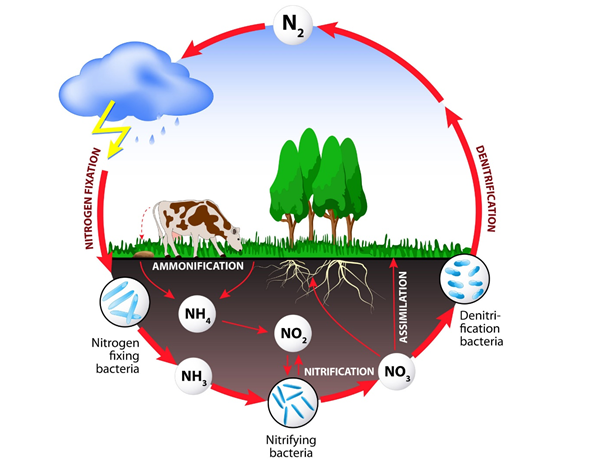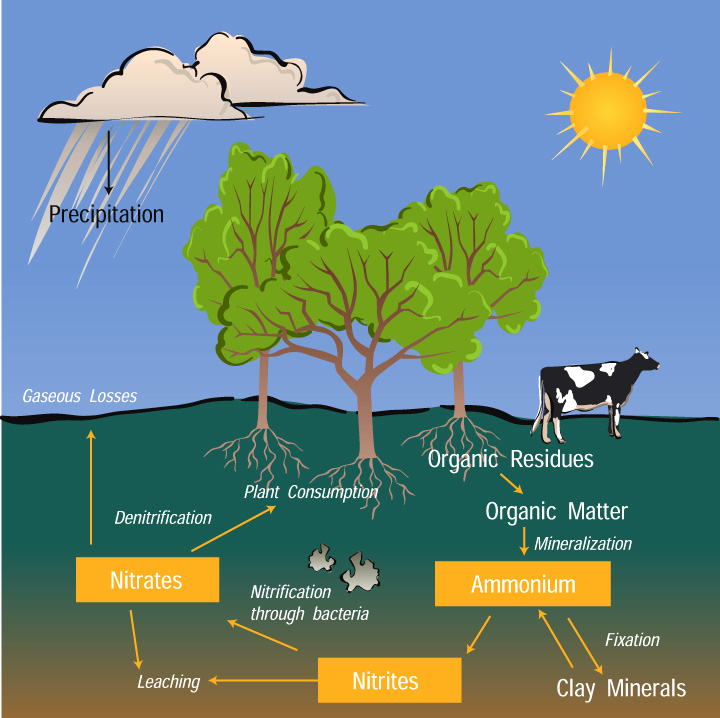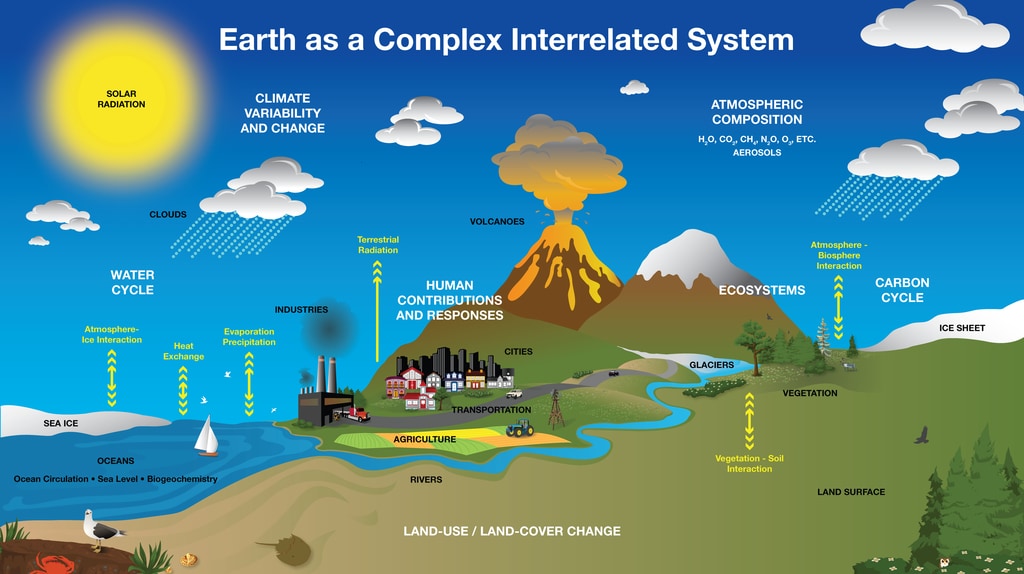Identify the Components of the Energy Cycle.
All elements in the earth are recycled time and again. Through the water cycle heat is exchanged and temperatures fluctuate.
Discuss the biogeochemical cycles of water carbon nitrogen phosphorus and sulfur.

. As water evaporates for example it absorbs energy and cools the local environment. Explain how human activities have impacted these cycles and the resulting potential consequences for Earth. As water condenses it releases energy and warms the local environment.
Water is always changing states between liquid vapor and ice with these processes happening in the blink of an eye and over millions of years. The suns energy converted by plants into simple sugars is the starting point of any food chain. Dark surfaces like a forest or the ocean absorb more energy.
Surface reflectance and energy. These two events copying and cleaving represent the two larger phases of the cell cycle interphase and Mitosis. All things absorb and reflect energy from the Sun.
A simplified representation of the terrestrial carbon cycle side by side with the ocean carbon cycle. Plants are the primary producers which are organisms that create their own food. These interactions are very complex and even small changes in them can lead to significant changes in long-term climate behavior.
Energy budget albedo reflection absorption radiation unequal heating. Carbon is a fundamental part of the Earth system. Bright surfaces like snow ice and clouds reflect more energy than they absorb.
Components of the Carbon Cycle Components of the Carbon Cycle. Microscopic organism that lives in the ocean and can convert light energy to chemical energy through photosynthesis. Biogeochemical cycles important to living organisms include the water.
Energy flows directionally through ecosystems entering as sunlight or. A part of the energy is stored within the plants. Energy Flow in Ecosystem.
The absorbed energy heats the surface and it radiates heat back into space. The remaining energy is utilised by the plants in their growth and development. 5 components of a virtuous cycle for energy efficiency.
Carbon Cycle and Ecosystems. These animals and plants eventually die and upon. Matter and Energy Cycles.
These plants are then consumed by animals and carbon gets bioaccumulated into their bodies. A simple illustration of the major elements of the energy cycle is shown in the figure. It consists of interdependent and interacting elements of the natural environment in a geographical area.
About 18 of your body consists of carbon atoms by mass and those carbon atoms are pretty key to your existence. Plant production of simple sugars becomes the energy of growth and reproduction. Sunlight water and carbon are central to the energy conversion that is photosynthesis.
Following are the major steps involved in the process of the carbon cycle. The ways in which an elementor compound such as watermoves between its various living and nonliving forms and locations in the biosphere is called a biogeochemical cycle. It is one of the primary building blocks of all organic matter on Earth and a key element in setting Earths temperature.
This stored energy is transferred to the primary consumers when they feed on the producers. Fluxes and reservoirs expressed in gigatons are included. Photosynthesis a process solar energy in a molecule performed by plants that trap of sugarglucose.
By the end of this section you will be able to. Water Cycle Hydrologic Cycle The. Weather Climate iQuest.
What major chemicals are involved in the energy cycle. The major elements such as oxygen carbon nitrogen phosphorous and. The Water Cycle and the Landscape.
Earths water is always in motion and the natural water cycle also known as the hydrologic cycle describes the continuous movement of water on above and below the surface of the Earth. This energy flows into the Atmosphere and heats this system up It also. The energy cycle describes the interactions between energy sources within the Earths environment.
Building block and fuel source. Cellular Respiration a process that releases energy trapped in sugar for use in the body. Energy from the Sun is the driver of many Earth System processes.
In order to empower their organizations to capture energy savings. Carbon present in the atmosphere is absorbed by plants for photosynthesis. Diagram showing the main components of the hydrologic cycle including evaporation transpiration precipitation runoff infiltration and groundwater runout.
Mitosis is the part of the cell cycle when the cell prepares for and. In a wider sense energy cycle may refer to the following engineering fields. Without carbon you wouldnt have the plasma membranes of your cells the sugar molecules you use for fuel or even the that carries instructions to build and run your body.
These are the reservoirs or sinks through which. The movement of water between these reservoirs primarily driven by solar energy influx at the Earths surface is known as the hydrologic cycle. CO2 O2 sugarglucose ATP battery H2O.
The various components further include energy minerals nutrients water oxygen and living organisms. Organism that eats producers. We have already discussed how the two main events of cellular reproduction are the copying of cellular components and the cleavage of the cell.
Top-level executives recognize energy efficiency as a key strategic priority for generating cost savings and building. Components of the Carbon Cycle. Most carbon is stored in rocks and sediments while the rest is stored in the ocean atmosphere and living organisms.
Process by which plants turn water sunlight and carbon dioxide into water oxygen and simple sugars. Energy cycles are based on the fact that in physics energy is conserved and may in particular refer to. The carbon cycle is natures way of reusing carbon atoms which travel from the atmosphere into organisms in the Earth and then back into the atmosphere over and over again.
Carbon moves from the atmosphere to the land ocean and life through biological chemical geological and physical processes in a cycle called. The water cycle also influences the physical geography of the Earth. The producers synthesise food by the process of photosynthesis.
Most of the energy in an ecosystem comes from the Sun. Energy flows through an ecosystem and is dissipated as heat but chemical elements are recycled. In this lesson students will explore through labs videos and a simulation how energy from the sun is absorbed reflected and radiated back out into space as part of the Earths energy budget.

Earth System Matter And Energy Cycles Mynasadata



No comments for "Identify the Components of the Energy Cycle."
Post a Comment